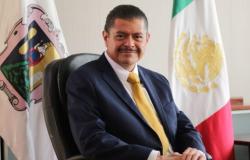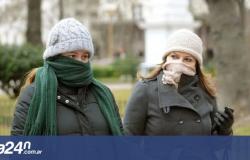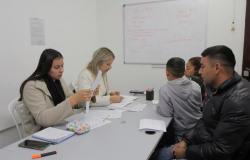In recent days, Ecologists in Action published a report that stated that the 320,000 inhabitants of Rioja were exposed during 2023 to pollution that exceeds the recommendations of the World Health Organization (WHO). And this Monday, the Government of La Rioja has made public the results of the Air Quality Assessment of La Rioja with very different conclusions because the Government of La Rioja assures that “92% of the time the air quality in La Rioja Rioja has been good or reasonably good.”
The general director of Environmental Quality, Climate Change and Water, José María Infante, presented this Monday the results of the La Rioja Air Quality Assessment, which confirms the trends observed during the air quality assessment carried out during the year. 2022, with slight improvements in general terms in 2023. “92% of the time the air quality in La Rioja has been good or reasonably good,” he assured.
This evaluation establishes that the air quality objectives were met, where no limit value or any objective value established for the protection of health or vegetation was exceeded in any of the seven atmospheric pollutants analyzed, with the exception of some specific exceedances of long-term ozone (O3) objectives. “It is vital to know the quality of the air, especially when we inhale 14 kilos of air every day,” he noted.
In this sense, José María Infante has pointed out that “the air quality of La Rioja is consolidated as good for our health and for the protection of our ecosystems with fairly low thresholds for practically all pollutants.”
For yet another year, air quality has been influenced by episodes of Saharan intrusions. The general director of Environmental Quality, Climate Change and Water has stressed that “two out of every three times that air quality in La Rioja has been average or bad has been due to dust from the Sahara.”
Along with climate change, air pollution constitutes one of the greatest environmental threats to human health. Specifically, the World Health Organization (WHO) estimated in 2022 that 7 million deaths annually in the world may be attributable to air pollution, in addition to causing the loss of as many millions of years of healthy life.
Air quality monitoring has been carried out by continuously measuring the main atmospheric pollutants from five monitoring stations (Logroño, Arrúbal, Pradejón, Alfaro and Galilea) that make up the La Rioja Air Quality Monitoring Network .
The pollutant concentration data are manually validated by technicians in the air quality information management center located in the General Directorate of Environmental Quality, Climate Change and Water, from where they are transmitted to the Ministry for the Ecological Transition and the Challenge Demographics practically in real time.
In turn, the Ministry sends them to the European Commission to make them available to citizens and to other organizations such as the State Meteorological Agency (AEMET), the Higher Council for Scientific Research (CSIC) or the Barcelona Supercomputing Center (BSC). . Likewise, temporary data on the concentration levels of pollutants are made available to the public through the Government of La Rioja website.
Evaluation of air quality in La Rioja
With regard to the limit values for health protection, the report states that in the urban agglomeration the levels of sulfur dioxide (SO2) have been maintained, while in the rural area there is hardly any variation, levels are also maintained by below the lower evaluation threshold and with hardly any substantial variations with respect to the previous year. The situation regarding the Air Quality Index has been good all year round with regard to this pollutant.
Regarding the concentrations related to nitrogen oxides, they continue to be in compliance, with 94% of the time in good condition and 5.99% in reasonably good condition. However, while in the rural area concentrations have improved, in the urban agglomeration the average levels have increased slightly (+6%), continuing with the trends of recent years.
The values obtained for the finest and most harmful particles (PM 2.5) have remained far from exceeding the current annual limit values. Regarding carbon monoxide, the values presented in the report are very far from the limit value (10 mg/m3), remaining at stable thresholds compared to previous years or with a slight decrease in urban areas.
In both 2022 and 2023, the situation in the urban agglomeration regarding the benzene pollutant has been very good, since the levels are even below the previous evaluation thresholds.
Finally, with the data obtained at the Galilea station on the limit values for vegetation protection, in comparison with the results obtained in 2022, it can be seen that the values of sulfur dioxide have remained stable, those of sulfur dioxide Nitrogen (NO2) have experienced a slight decrease compared to the previous year and the ozone (O3) situation has improved in 2023, so that there were no exceedances of this threshold compared to two in the previous year.






